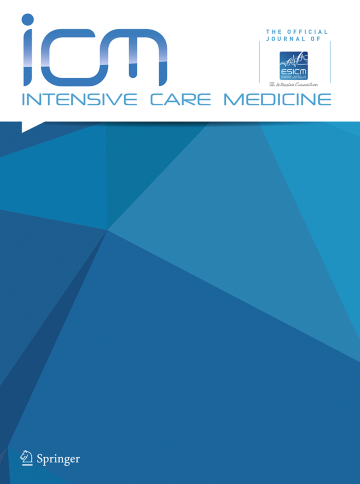Identification of transcriptomic sepsis endotypes in sub-Saharan Africa: derivation, validation, and global alignment in two Ugandan cohorts.
IF 21.2
1区 医学
Q1 CRITICAL CARE MEDICINE
引用次数: 0
Abstract
PURPOSE Sub-Saharan Africa carries the highest global burden of critical illness, yet transcriptomic sepsis endotypes have not been defined in the region. Their clinical relevance and alignment with endotypes identified in high-income countries (HICs) remain unknown. METHODS We analyzed data from two prospective observational cohorts of critically ill adults with sepsis in Uganda (discovery cohort [Tororo, rural], N = 243; validation cohort [Entebbe, urban], N = 112). Unsupervised clustering of whole-blood RNAseq data was used to identify endotypes in the discovery cohort. A random forest classifier was used to predict endotype assignment in the validation cohort. Differential gene expression, pathway enrichment, and digital cytometry were used to define endotype pathobiology and determine overlap with HIC-derived endotypes. RESULTS Two endotypes-Uganda Sepsis Endotypes 1 (USE-1) and 2 (USE-2)-were identified in the discovery cohort. USE-2, marked by neutrophil-driven innate immune activation and lymphocyte suppression, was associated with greater physiological severity and higher mortality (41.3% vs. 22.0%; absolute difference 19.3%, 95% CI 7.6-30.9%), irrespective of HIV, tuberculosis, or malaria infection. A 13-gene classifier (misclassification rate 1.43%) replicated two endotypes in the validation cohort with similar biological and clinical profiles. USE-2 showed strong transcriptional overlap with SRS1 and inflammopathic endotypes but only modest concordance in patient-level assignments. Overlap with Mars1 was variable. CONCLUSIONS We identified two transcriptomic sepsis endotypes in Uganda that reflect inter-individual differences in targetable pathobiology and confer prognostic enrichment across high-burden infections. Divergence from HIC-derived endotypes highlights the need for sepsis classifications that are both globally relevant and locally responsive.在撒哈拉以南非洲鉴定转录组败血症内型:推导,验证,并在两个乌干达队列的全球校准。
撒哈拉以南非洲地区是全球重症负担最重的地区,但该地区的转录组败血症内型尚未确定。它们的临床相关性和与高收入国家(HICs)确定的内源性类型的一致性仍然未知。方法:我们分析了来自乌干达两个前瞻性观察队列的重症脓毒症成人患者的数据(发现队列[托罗罗,农村],N = 243;验证队列[恩德培,城市],N = 112)。使用全血RNAseq数据的无监督聚类来识别发现队列中的内型。随机森林分类器用于预测验证队列中的内型分配。差异基因表达、途径富集和数字细胞术用于定义内型病理生物学,并确定与hicc源性内型的重叠。结果在发现队列中鉴定出两种内型-乌干达败血症内型1 (USE-1)和2 (USE-2)。以中性粒细胞驱动的先天免疫激活和淋巴细胞抑制为标志的USE-2与更大的生理严重程度和更高的死亡率相关(41.3% vs. 22.0%;绝对差异19.3%,95% CI 7.6-30.9%),与HIV、结核病或疟疾感染无关。一个13基因分类器(错误分类率1.43%)在具有相似生物学和临床特征的验证队列中复制了两种内窥镜类型。USE-2与SRS1和炎性内型表现出强烈的转录重叠,但在患者水平上的分配只有适度的一致性。与火星1号的重叠是可变的。结论:我们在乌干达发现了两种转录组脓毒症内型,它们反映了可靶向病理生物学的个体间差异,并赋予了高负担感染的预后富集。与hicc衍生的内型的差异突出了败血症分类的必要性,既与全球相关,又与局部反应相关。
本文章由计算机程序翻译,如有差异,请以英文原文为准。
求助全文
约1分钟内获得全文
求助全文
来源期刊

Intensive Care Medicine
医学-危重病医学
CiteScore
51.50
自引率
2.80%
发文量
326
审稿时长
1 months
期刊介绍:
Intensive Care Medicine is the premier publication platform fostering the communication and exchange of cutting-edge research and ideas within the field of intensive care medicine on a comprehensive scale. Catering to professionals involved in intensive medical care, including intensivists, medical specialists, nurses, and other healthcare professionals, ICM stands as the official journal of The European Society of Intensive Care Medicine. ICM is dedicated to advancing the understanding and practice of intensive care medicine among professionals in Europe and beyond. The journal provides a robust platform for disseminating current research findings and innovative ideas in intensive care medicine. Content published in Intensive Care Medicine encompasses a wide range, including review articles, original research papers, letters, reviews, debates, and more.
 求助内容:
求助内容: 应助结果提醒方式:
应助结果提醒方式:


